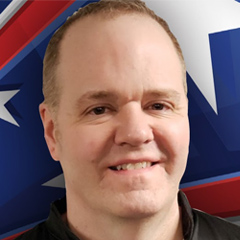
Bowling Ball Fit Basics
Scott PohlBowling ball fit can make or break your game. Many bad habits bowlers find themselves working on can be traced back to a bad fit.
Scott Pohl, the owner of On Track Pro Shop, explains what to expect when getting fit for a ball and what it should feel like so you know that you’ve received a good fit.
Thumb sizes
Getting sized-up for your fingers and thumb requires some tools and a common one used amongst pro shops is an oval measuring disc/span ruler.
When evaluating your thumb, make sure it’s not too tight or loose. Think about leaving room for one piece of tape in your thumbhole.
Most thumbs resemble an oval shape. Like an oval, a thumb has a wider side and a narrow side.
Oftentimes a bowler and pro shop operator can find a pre-cut oval that fits your thumb but in certain cases that’s just not possible.
Callipers are then used to gather both the wide side and narrow side measurements.
Next, the pro shop operator will determine where the wide side and the narrow side of your thumb will be angled into the bowling ball.
Span
The span refers to the distance from the front edge of the drilled thumbhole to the front edges of the two finger holes.
To measure your span a pro shop operator will use the oval measuring disc/span ruler again.
The three marks on Scott’s finger identify a conventional grip, semi-finger tip and finger-tip grips.
Your skill level and finger flexibility will determine which is best for you.
Pitches
Pitches are not a one size fits all measurement. They are designed specifically for your hand and style of play.
The thumb hole angles influence your release technique.
A forward pitch angle in your thumb hole will help you hold onto the bowling ball slightly longer than a reverse pitch angle.
If you’re strong handed with a lot of grip pressure your pitch angles will likely be reversed in the thumb.
For the finger holes, forward pitches allow your fingers to remain in the ball a split second longer than reverse pitches.
Reverse pitches tend to assist in rolling the ball with low axis tilt and in a forward rolling motion.
Watch What is a Good Fit and Fitting for the Modern Game from National Bowling Academy expert coaches to learn more on one of the most important subjects in bowling.
Hi, Scott Pohl here, Mini Eliminator Champion. And what we're talking about today is the bowling ball fit basics. A couple of things to consider. When you go in and get your bowl ball fitted, number one we're gonna start with the size. Very important to get the right size.
First of all, we're gonna talk about the thumb hole. If we take a fit on the thumb hole, we want to make sure we have enough room in there, we don't want to have a too tight, have a little bit of room for tape. There's a couple different types of thumb holes. Number one, there's a round thumb hole. Not a lot of the time, sometimes that is available.
Most of the time people have more of an oval fit on their thumb. It's gonna be wider versus the more narrow side, great way to have this fit. There's some thumbs that are already pre-ovaled or, if that's not available, we take what's called the caliper and we measure the thumb from the narrow side and we go to the wide side and that tells us two different numbers, wide versus narrow. Okay, remember that. So when we actually put our hand in the bowling ball, we need to figure out where that wide side is gonna be angled versus the narrow side.
And how we do that is, we mark our thumb basically split right down the middle of the backside. Next we put our finger in the ball and the thumb so that we can actually see the pen on my thumb. And if I pull that out right there is where that comes in. So the next order of operation is draw on the ball. We split it right down the middle.
That tells me my thumb angle. Great way of figuring it out. Perfectly draw a line from the fingers back to the thumb. And this is actually right here, that's our angle. How we measure that, come into right here.
What that tells me is mine is perfectly 45 degree thumb angle. Okay? Vice versa, a left-handed player. Their thumb angle is gonna be over in this part of the ball. All right?
So we have the thumb figured out. Now we're gonna go to what's called the span or how far apart our thumb and fingers are. So what we do is grab a span ruler like this one here. And we're gonna look at is the span is dictated for a fingertip ball. This first mark, it's right between the first and second knuckle, that's gonna give me a measurement.
Let's say you're going with just a conventional fit. It's gonna be basically about a quarter of an inch below the second knuckle. So a couple of different ways to figure out the correct span. Okay. Now you can do the same thing for fingers.
If you use round holes versus oval holes, finger grips, whatnot. Okay. So we have all the sizes, we have the span, what's left? Pitches. Pitches, we can angle those thumb holes, finger holes to match that hand.
All right, let's take a couple of examples. My hand is fairly thick. I wanna make sure I can get out of that bowling ball. My pitches are gonna be different than someone who has a very thin hand and possibly bends more. So my thick hand, I'm gonna make sure I have enough what's called reverse pitch in the thumb.
Reverse pitch, going away from my fingers. The next thing is I wanna make sure I have enough reverse pitch in my fingers to get out of the ball as well. Someone who is really flexible, you can change those a little bit, just the opposite way. All right. Another example is strength.
Let's say you have a bowler who's very strong handed. They can really grip the ball. You're not gonna get them out of that habit very fast. What we wanna make sure is we have enough reverse pitch again in the thumb, so it doesn't lock them up and they can't clear that thumb hole. Lastly, let's say you have someone who's very weak.
We have to make sure the thumb hole has enough forward pitch and also that the fingers are angled correctly because they want it to stay on their hand the right way. Keep in mind the fit is an ongoing process and you wanna make sure you keep tweaking it to get the right fit.
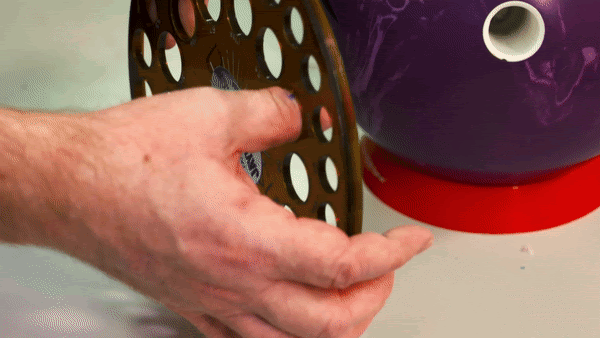
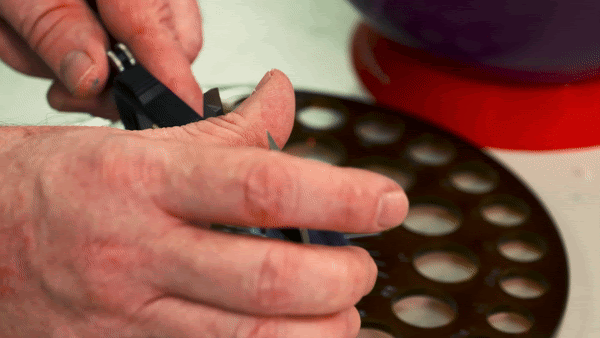
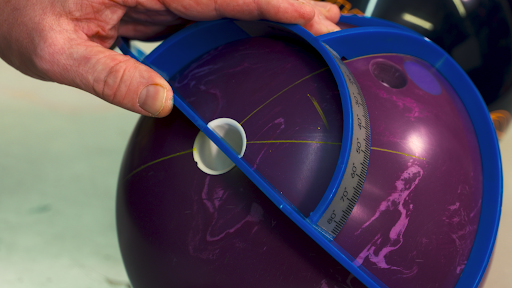
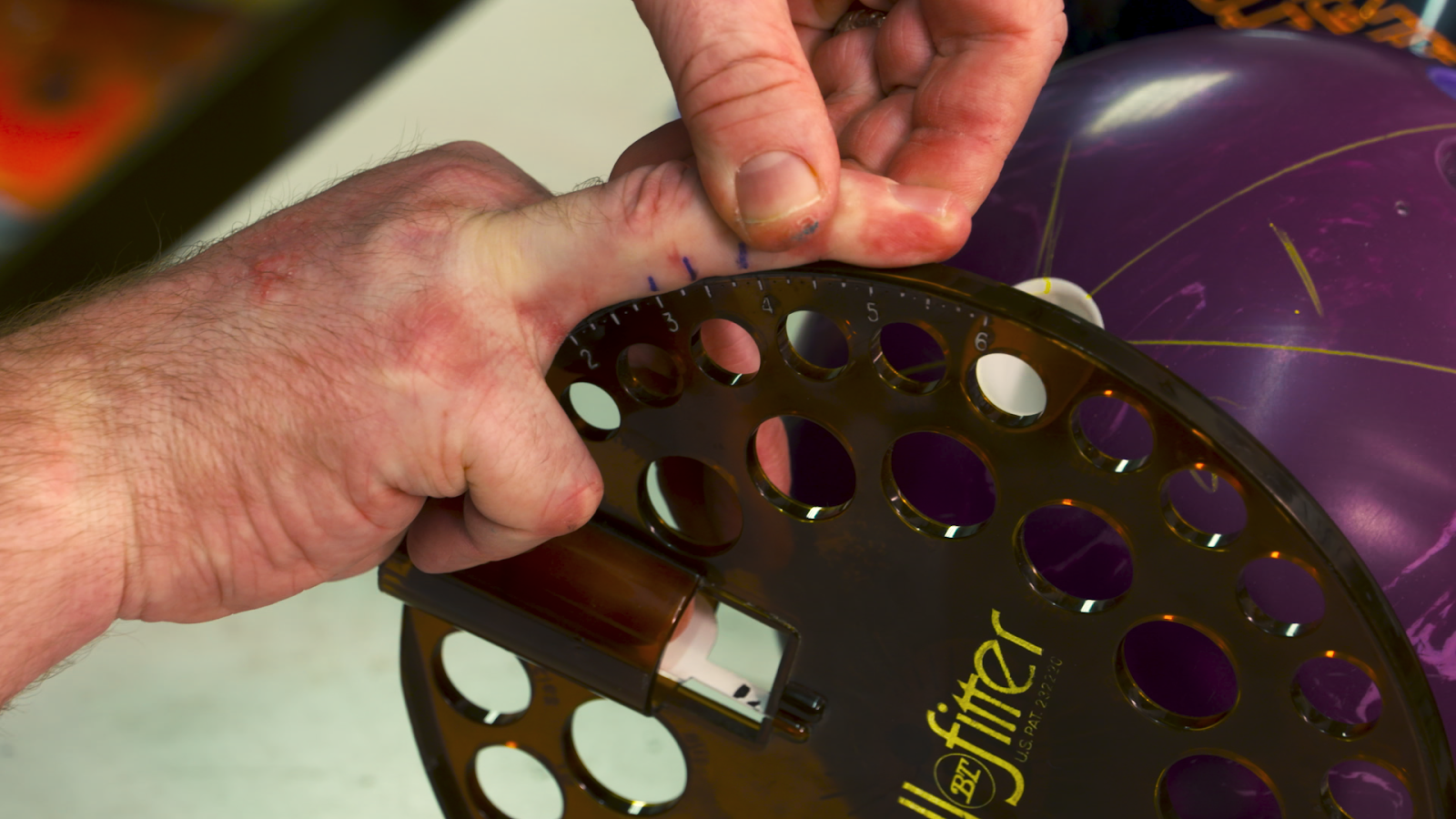

Share tips, start a discussion or ask other students a question. If you have a question for an expert, please click here.
Already a member? Sign in
No Responses to “Bowling Ball Fit Basics”